Project Pipeline
Architectural Mentorship Program
Charlottesville, Virginia
The National Organization of Minority Architects (NOMA) Project Pipeline Architectural Summer Camp aims to increase the number of underrepresented minorities, especially African-Americans, pursuing careers in architecture and design. During the summer of 2019, the University of Virginia (UVA) School of Architecture piloted its first version of Project Pipeline in partnership with our National Organization of Minority Architects Student Chapter and the Charlottesville Public Housing Association of Residents PHAR (Piedmont Housing Association of Residents). Funded through the Jefferson Trust and supported by the National Endowment for the Arts, the program provided a two-week intensive design experience for seven African American youth designed to improve their pathways to pursue design education and engaged UVA students in learning from and mentoring young people in local K-12 school systems.
- Goals
Overall goals include changing institutional culture, deepening recruiting efforts, and providing multi-scalar and student peer men¬torship opportunities for underrepresented potential applicants, current students, faculty, and staff. The design goal of the program produced three design concepts for a new ecological nature park for Charlottesville’s South First Street Housing Community, utilizing a large ash tree currently on site. - Service Learning & Community Engagement Pedagogy
The program utilized specifically designed empathy-based exercises to introduce design inquiry for youth in the design studio, and with PHAR community leaders initiating the ecological nature park. Program faculty produced curriculum exercises to build confidence and awareness with youth to assess the needs of our community leaders of the South First Street site, including on-site interviews in the community and at regional precedents. Reflecting on findings, students designed in collaborative teams to achieve stakeholder goals. The program culminated with training for final community design reviews with stakeholders. Faculty invested in spatial and social justice public interest design led curriculum, with examples of current work such as the Friendship Court Charlottesville Housing Project, and the installation of the Charlottesville Memorial for Peace and Justice (from the Montgomery Equal Justice Initiative). Civic responsibility continues through design exercises and references of African American designers and artists to influence beliefs on the role of black creativity in the American landscape, culminating with a field trip to the NMAAHC. Curriculum included context tours of Jefferson’s Academical Village from the perspective of the enslaved, the Downtown Mall with local landscape architects, visits to local wood fabricators to test design ideas, and design reviews with the current local architect directly working with the South First Street Community / PHAR. These experiences, combined with working in design teams at the school’s studio space, provided platforms with first-hand knowledge of cooperative and collaborative problem solving to develop three design concepts for the site. - Student/Participant Experience
Students learn the cultural landscape of Charlottesville and Washington, D.C., evolving a personal understanding of African American design thinking, realizing the impacts of African Americans in the built environment. The program created an understanding that design creativity is an innate, as well as learned set of skills to direct positive social change, demonstrated in curriculum examples. Faculty goals included design methods for students to implement during and after completion of the program. Collaboration methods learned in the design studio, boosted confidence and understanding to personal values to build in their own community, respecting stakeholder needs. By engaging in direct conversation and interactions with current design professionals on community projects, students learned of the political, social, and cultural role of design, and methods of community engagement. Students emerge from the program with deeper understanding of fellow community leaders, members, and citizens, designing a new space of which their own families and friends will visit. By creating an inclusive, positive and democratic design environment, students presented three design concepts for the nature park at the South First Street Community Center. - Community Experience
The summer program initiated through existing community relationships maintained by program faculty Professor Barbara Brown Wilson, a funding requirement by the University’s Jefferson Trust. Students, community leaders, and program supporters were included in an exhibition detailing the activities and design results of the program, as well as VIP guests at the School’s Dean’s Forum Inclusion and Equity Lecture with Deanna Van Buren to continue collaborations in September. The exhibition is displayed for one month as part of the School’s Centennial celebrations. The work of the program continues this fall with four students from the program working with two undergraduate student leaders to refine designs while the City prepares the site for the installation of a pedestrian bridge. Meetings in the summer with local wood fabricators, and continual community meetings with the local architect continue to support the work, currently aiming for a spring 2020 opening. Links between the community and the University continue with all faculty connected with the summer program continuing to develop the designs with community stakeholders. - Faculty/Staff Experience
Faculty and student mentors learned new pedagogical skills with social, cultural, and racial perspectives for connecting with local youth, developing new techniques of active listening and collaborative support. As a project team, leadership for the program developed a day-to-day sharing of ideas, details, and innovations to facilitate successful interactions between students, becoming stronger throughout. The confidence shown by students at the final presentations in the community, as well as continued engagement in the fall of 2019, demonstrated the personal, social, and professional growth of the participants. Also, one student of the program intends to advance her transfer from a local community college to begin her design education at the School of Architecture in 2020. - Institutional Priority
In the summer of 2018, the UVA School of Architecture adopted an Equity and In¬clusion Plan that set new priority actions and goals (https://www.arch.virginia.edu/about/inclusion-equity). The plan notes the racial homogeneity of professions of architecture, landscape architecture, and planning, how that results in a loss for the fields without the incredibly important perspectives of so many creative minds and commits to developing new programs to change that pattern locally.
The program is a prototype and starting point for developing approaches necessary for longer-term efforts within the School of Architecture. The Inclusion and Equity Committee’s plan recognizes the gap between our ideals of democracy and the specific structures of inequity that have structured and continue to shape our institution and our broader social worlds.
Shifting these existing dynamics will require sustained, reflexive engagement with past and present failures as we work together to realize our aspirations. Change in our institution is not simply a project of including more people of varied backgrounds, identities, and experiences at the table, but of committing ourselves to the sustained, critical re¬thinking of our institutional policies, practices, structures, and culture. We aim to move beyond an assimilationist model of inclusion to build the capacity for expanding access and redistributing power through a self-reflexive process of questioning and rethinking systemic inequities, biases, and norms. - Future Goals
Design Development
The continuation of the design with four students from the summer program with community stakeholders, a local design firm, and the local manufacturer to develop the designs for production in early 2020.
Program Development
The success of the program initiated interest in funding opportunities from alumni connected to Inclusion and Equity efforts of the School of Architecture, with goals of defining the next iteration of the program.


